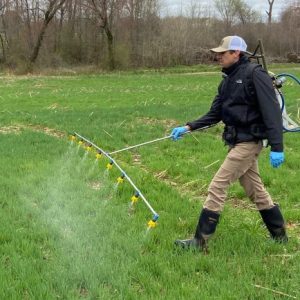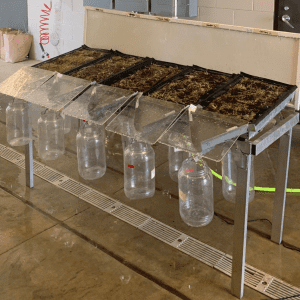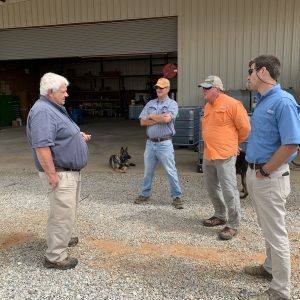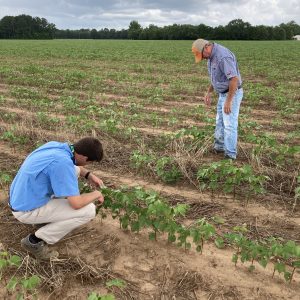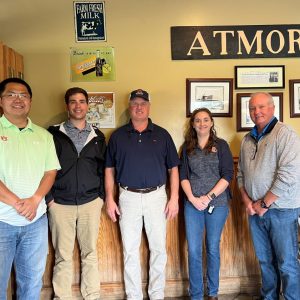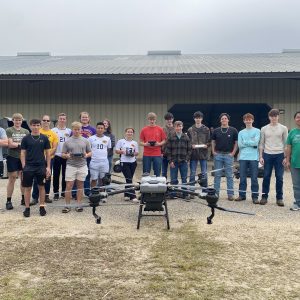Crop Production

The Agronomic Crops Team delivers research-based integrated information to improve crop management decisions while increasing profitability. Extension specialists and agents offer expertise in agronomy, plant pathology, entomology, weed science, precision agriculture, nutrient management, variety evaluation, and other areas for all major field crops.
Cotton Foliar Disease Management
Project Leader: Amanda Strayer-Scherer
Areolate mildew and target spot are Alabama cotton’s two most economically significant foliar diseases. These warm, wet weather diseases are particularly concerning due to their early onset, resulting in premature defoliation and yield losses ranging from 200 to 500 pounds of lint per acre. Field trials were established at multiple locations in Alabama. Monitoring efforts revealed that areolate mildew and target spot began to develop in mid-August, and severity rapidly increased in untreated cotton through mid-September. Through timely disease updates, producers were advised to protect their crops with a timely fungicide application to prevent yield losses due to premature defoliation. With a single application of a fungicide, producers can increase yield by an average of 120 pounds of lint/A and profit by $53/A under moderate disease pressure. Timely disease updates were delivered to stakeholders at two Alabama Agricultural Experiment Station (AAES) outlying unit field days, two cotton production meetings, the 44th Annual Central Alabama Crops Tour, the 2022 Alabama Row Crop Short Course, and via six Agronomic Crops Report newsletters, two AgFAX news articles, and social media.
- Figure 1. Areolate mildew on cotton.
- Figure 2. Fungus spore traps at the Auburn University plant breeding unit.
Weed Management Strategies for Alabama Cropping Systems and Herbicide Stewardship
Project Leaders: David Russell, Steve Li
Twenty statewide, in-person auxin trainings were conducted in addition to the availability of online training opportunities. Research updates and applicable weed management recommendations were presented for multiple cropping systems and dicamba requirements for cotton and soybean production. Responses from more than 270 attendees indicated that their greatest challenges were the timeliness of herbicide application, input costs, lack of precision application technology, and weather. Between grower surveys and conversations with REAs, most indicated that pigweed was the most problematic weed on their farms. Annual ryegrass and marestail were the next most common and problematic cool-season weed species. More than 100 replicated weed research and herbicide field trials were established statewide to address many of these weed management issues. Outcomes from these findings included 50-plus in-person presentations focusing on weed control and herbicide applications, 5 field day demonstrations, 5 Extension publications, 20-plus nonpeer-reviewed articles or newsletters, and one appearance on the Alabama Extension Ag Crops podcast. More than 270 respondents managed an average of 1,200 acres of farmland, and they indicated that the information learned from these grower meetings saved at least $12 per acre on input costs if they implemented the management strategies. Based on survey data, the overall program impact exceeded $2.65 million.
- Figure 3. David Russell conducting auxin training in Cullman.
- Figure 4. David Russell, assistant Extension professor, spraying herbicide plots.
Timely Fungicide Application for Soybean
Project Leader: Edward Sikora
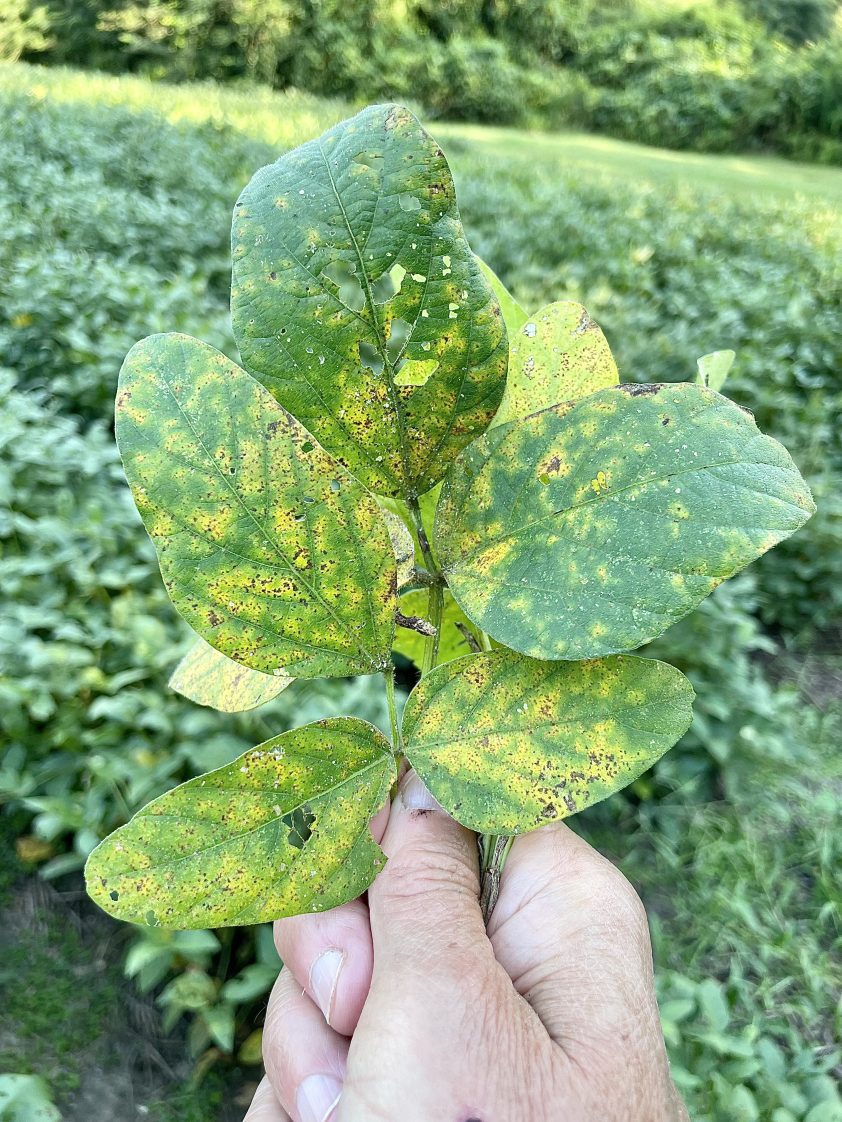
Figure 5. Soybean rust from field trials.
Soybean diseases cause an estimated 8% yield loss in Alabama annually. Common foliar diseases include soybean rust, frogeye leaf spot, target spot, and Cercospora leaf blight. Fungicide applications can reduce yield and quality loss due to foliar diseases, depending on the plant’s developmental stage, when the disease is detected, and the application timing and method. Incidence and severity of foliar diseases were relatively minor in 2022 compared to previous years due to extended periods of dry weather during the growing season. However, wet conditions in south Alabama in August did lead to an outbreak of soybean rust in that region. The disease was developing rapidly in a soybean disease sentinel plot in Brewton, so Alabama Extension used the field as a fungicide demonstration test. Half of the one-quarter-acre field was sprayed with a fungicide (Veltyma at 7 ounces/Acre) at the R3 growth stage, and the other half was left unsprayed. Results showed that the fungicide-treated half of the field yielded 55.5 bushels/Acre compared to the unsprayed half that yielded only 44.4 bushels/Acre—a 20% increase in yield using a single application of Veltyma at the R3 growth stage. This was an excellent example of the benefits of scouting for disease and applying a fungicide when needed. In this case, at $14/bushel soybeans in 2022, the increase in yield surely would have paid for the single fungicide application and increased total profitability.
Alabama Extension Corn Audit Program
Project Leader: Eddie McGriff

Figure 6. Henderson Farms helped harvest a replicated corn fertility trial that has aided in making wise fertility decisions to increase yields and profits.
The Alabama Extension corn audit (25 production practices based on applied on-farm research in north Alabama) has helped growers increase yields and profits. The program is presented at Extension production meetings and one-on-one farm visits. The program results include two Alabama growers placing in the top three of the National Corn Growers Association’s annual yield contest. This is the first time Alabama has had growers place in the top three. Chad Henderson, who is featured on RFD-TV’s Corn Warriors, placed second in the national contest in 2022 and says, “Extension’s on-farm trials and incorporating practices in the corn audit were key to Henderson Farms consistently obtaining high yields.”
Alabama Grain Crops and On-Farm Variety Trials
Project Leaders: Eros Francisco, Tyler Sandlin, Sedrick Mack
The Alabama Grain Crops Project ended its first year in 2022 with a variety of contributions. A total of 32 trials were conducted across the state and evaluated a range of topics: corn and soybean varieties, seeding rates and planting dates for corn and soybean, fertilizer best practices on corn, biologicals and inoculants on soybean, and a statewide survey on soybean plant variability. The project also accomplished several Extension activities related to training and assisting regional Extension agents in advancing their knowledge through 2 webinars, 50-plus field visits, phone calls, and 2 Extension materials. They also presented information to grain producers in 10-plus meetings, 2 field days, 30-plus farm visits, and 4 podcasts. Agronomic team members produced 1 video on root-knot nematode identification and management for soybean systems. An agronomic crops regional Extension agent helped a corn grower in Geneva County properly determine corn maturity and reduced unnecessary irrigation from 4 center pivots, creating an estimated saving of $8,400 for the farmer.
- Figure 7. Extension grain specialist Eros Francisco and REA Guilherme Morata speaking at a field day at Gulf Coast Research and Extension Center.
- Figure 8. Eros Francisco, Extension grain crops agronomist (left), planting on-farm variety trial.
A total of 12 on-farm cotton variety trials were planted across the state representing major production areas and niche environments. Results from these trials are disseminated to growers and agricultural industry representatives through various media outlets and other forms of communication. On-farm variety trials provide real-world data to farmers, including varietal performance on their respective farms and trends in consistency across different growing regions. This information, in turn, helps growers make informed decisions about what varieties to plant or not plant, thus increasing their net profit potential. A large percentage of cotton acreage is planted throughout the state in top-performing varieties in these trials.
A total of 5 on-farm wheat variety trials were also planted in north Alabama, representing the major wheat-growing areas in the state. Information from these trials accomplished the same objectives as the on-farm cotton trials.
Wiregrass Cotton Expo
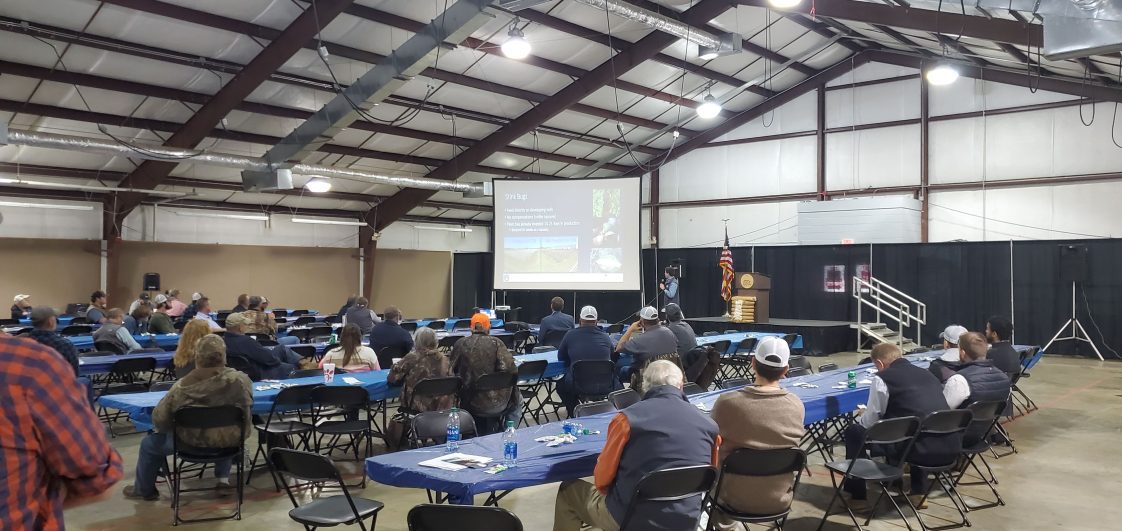
Figure 9. Scott Graham, Extension entomologist, speaking at Wiregrass Cotton Expo in Dothan.
Project Leaders: Jimmy Jones, Sedrick Mack
Each February, the Wiregrass Cotton Expo brings the latest research-based information to Wiregrass Region cotton growers. This multistate program draws growers from a 100-mile radius of Dothan where the event is held at the National Peanut Festival Fairgrounds.
The 2023 expo attracted 140 cotton growers who were treated to a trade show with 42 vendors and an educational program with Extension presenters representing two land grant universities. Growers represented approximately 51,000 acres of cotton grown in the region, averaging 364 acres per grower.
The information gathered by cotton growers who attended the 2023 Wiregrass Cotton Expo was worth $11.75 per acre. This resulted in a total economic impact of $599,250 for the cotton growers.
Peanut Pod Blasting
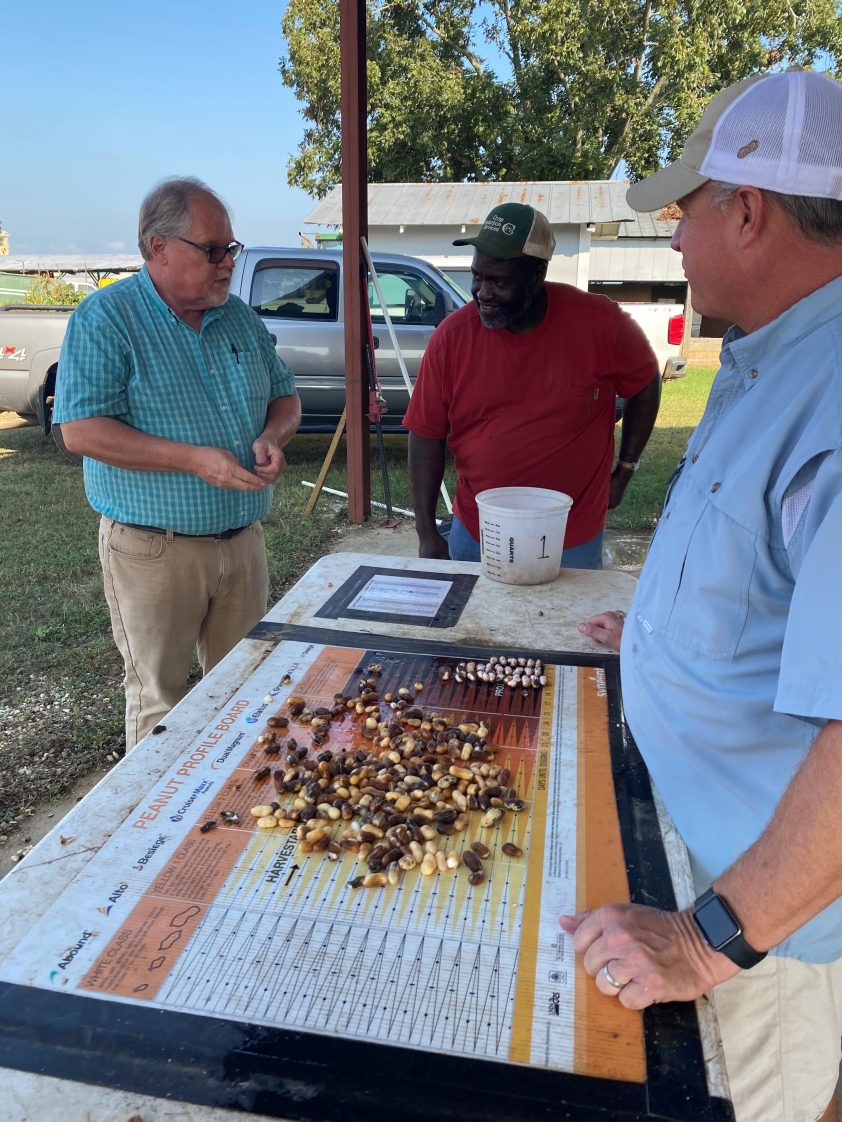
Figure 10. Kris Balkcom, Extension peanut specialist (right), helps a grower determine peanut crop maturity.
Project Leaders: Kris Balkcom, Jimmy Jones, Sedrick Mack
The 17th Alabama Extension Peanut Pod Blasting Workshops held at the Wiregrass Research and Extension Center in Headland helped 255 Wiregrass growers during the 2022 peanut season increase their profits $6.8 million by determining when to dig their peanuts for optimum maturity. A total of 500 samples were processed by Extension staff at no cost, resulting in savings to the growers of $12,500. Growers also realized an additional $8 per ton in increased grades of peanuts, resulting in $152,000 more revenue. The return on investment for Extension resources spent was $721.71 for every dollar invested in this program.
Alabama Crops Report Podcast
Project Leaders: Scott Graham, Amanda Strayer- Scherer, Katelyn Kesheimer, Adam Rabinowitz
Extension programming must continuously evolve to address changing stakeholder needs effectively. This was especially evident in 2020 as COVID-19 effectively stopped traditional in-person Extension activities, which are a crucial way to disseminate current information to producers. To ensure Extension’s continuing connection to growers, the Alabama Crops Report Podcast was created in 2021 with hosts Scott Graham, Katelyn Kesheimer, Adam Rabinowitz, and Amanda Strayer-Scherer. With each episode, the Agronomic Crops Team can release timely information straight to growers. With the help of Extension communicators, episodes are released on the website (www.aces.edu) and four podcast platforms: Apple Podcasts, Google Podcasts, Spotify, and Stitcher. Season 1 of the podcast averaged 74 listeners per episode; this number grew to 494 in season 2. A total of 44 episodes have been released, covering topics including pest management, carbon credits, soil health, solar technology, markets and economics, mental health, drone technology, climate, and disaster assistance. In 2022, our most popular episode was episode 13, which had 1,473 listeners on www.aces.edu alone—three times the average listeners in season 2. This episode focused on the Alabama Department of Agriculture and Industries A Healthy You, A Healthy Farm program, which discusses the importance of mental health in agriculture and provides resources and strategies for those in need. These resources are critical in rural agricultural communities with limited access to mental health services. These numbers indicate that we are not only reaching our listeners but also delivering meaningful and impactful content. Recent estimates indicate that less than 2 percent of the US population is directly employed in agriculture. This podcast not only serves the 2 percent in a meaningful way but also educates the 98 percent about what goes on in their state to help feed and clothe the world.
Alabama Animal Waste and Nutrient Management Program
Project Leader: Rishi Prasad
The mission of the Alabama Animal Waste and Nutrient Management program is to generate science- based information and deliver knowledge through educational programs in areas of environmentally sound and sustainable animal waste utilization and nutrient management in crop production systems.
The program has several ongoing federally and state- funded projects such as Future of Farming, Know Your Farm Phosphorus Levels, and Chicken Litter Use in Row Crops. The Future of Farming project uses a systems approach to demonstrate to Alabama row crop farmers the combined benefits of cover crops, smart irrigation practices for improving soil health, and water- and nutrient-use efficiency while conserving water and energy. The program has established three demonstration farms in Alabama to exhibit the best cover crop, irrigation, and nutrient management practices. The program has also formed three farmer- focused groups representing northwest, central, and southeast Alabama where farmers and researchers codevelop knowledge to increase the adoption of sustainable and resilient production practices. Each farmer-focused group includes local farmers, crop consultants, regional Extension agents, National Resources Conservation Services (NRCS) representatives, and state Extension specialists.
- Figure 11: Phosphorus leaching study.
- Figure 12: In-furrow nutrient application study.
Another component of Future of Farming is the cover crop incentive program. In 2022, 16 farms enrolled in the program and received customized cover crop recommendations and payments of $50 per acre on verified acres. Eight educational events were organized in 2022 under the Future of Farming project to educate farmers and stakeholders on cover crop practices, irrigation scheduling, and nutrient management. More than 250 people attended these events. Twenty abstracts were submitted to various national and international conferences, two technical papers and a thesis were submitted on the project’s social component, and 27 presentations were made at state meetings. Stakeholders reported increased knowledge and potential cost savings from the information shared in the educational meetings.
Cotton Scouting Schools and Crop Protection
Project Leader: Scott Graham
In 2022, the 63rd annual Cotton Scout School was conducted in Autauga, Cherokee, Henry, and Limestone Counties. In addition to cotton, soybean insect scouting was discussed in Autauga and Limestone Counties, and peanuts were discussed in Henry County. In total, 145 scouts were trained in the most up-to-date scouting methods and thresholds for key and sporadic insect pests. Survey results showed that 100% of respondents either learned new scouting methods or are currently already using the methods learned from previous scouting schools.
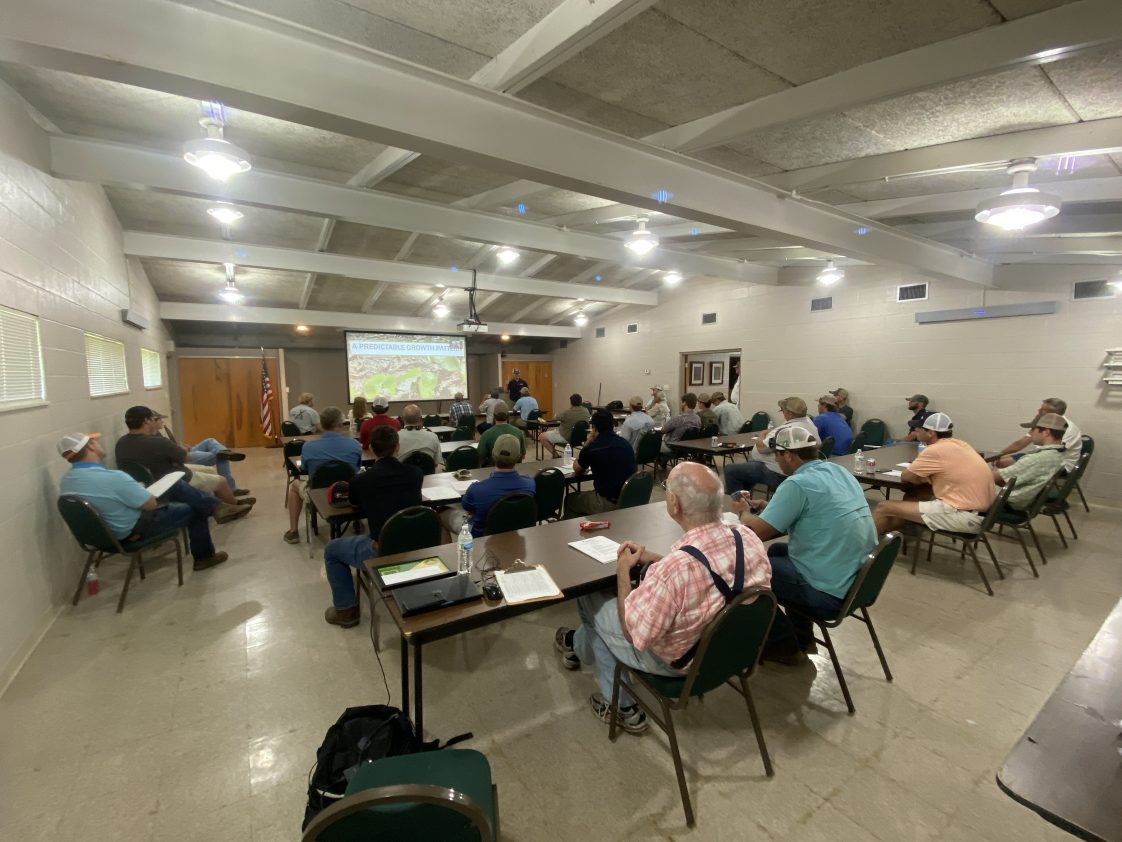
Figure 13. Scott Graham speaking at the 2022 Cotton Scouting School at the Wiregrass Research and Extension Center in Headland.
Thirty-three events, from regional county meetings to AAES field days and REA in-service trainings were conducted in 2022. Across these events, 1,178 stakeholders participated in face-to-face trainings. Survey respondents from county meetings indicated that updates provided were helpful (average rating: 4.5/5). When surveyed for use of Extension IPM guides, 68% of respondents indicated using guides when making crop protection decisions. Timely cotton, soybean, and peanut insect management information was disseminated via blog posts (18) and the Pest Patrol Hotlines (17). The overall economic impact of the Alabama Extension cotton, soybean, and peanut IPM team is estimated at about $6 million. The soybean disease team provided updates on the spread and severity of soybean rust and showed a 20% yield increase/savings in a field demonstration when one well-timed fungicide application was made. The peanut disease team showed that under heavy tomato spotted wilt virus (TPW) pressure, research results revealed that using a tolerant TSW peanut variety such as Georgia-12Y increased yield by 729 pounds/A when compared to a susceptible variety (increase of $219/A). The cotton disease team advised producers through imely disease updates to protect their crops with a timely fungicide application to prevent yield losses due to premature defoliation. With a single application of a fungicide, we estimate that producers can increase yield by an average of 120 pounds/A and increase profit by $53/A under moderate disease pressure. Throughout the year, 1% of the Auburn University Plant Disease Laboratory (AU-PDL) clientele are surveyed to determine specific impacts based on diagnostic recommendations. Clients surveyed (n=30) saved an average of $384/ sample by following Extension recommendations. With 2,922 routine plant samples, the AU-PDL saved clientele $1,122,048.
Cotton Information Delivery
Project Leader: Steve Brown
The Agronomic Crops Team members focus on cotton share information in multiple formats. Alabama Cotton Shorts is a monthly newsletter delivering timely management information from Extension specialists and regional agronomic crops agents to about 1,500 recipients. According to AudiencePoint, “A good email open rate [the number of recipients who actually open newsletters received via email] for newsletters is between 17 and 28%, depending on the industry. The average email marketing open rate is 21.3% across major industries.” The percent open rate for Alabama Cotton Shorts for the 13 issues in 2022 averaged 64.3%, representing significant exposure to cotton information across the state and region. Similarly, specialists and crop agents discuss cotton issues in the Alabama Crops Report newsletter. AgFax, Farm Press, broadcast media, and other outlets often quote excerpts from these newsletters. Steve Brown, Extension cotton agronomist, also provides a monthly entry in the Cotton Farming magazine, Specialists Speaking column. The magazine has a national print circulation of about 22,000 and an e-news recipient list of 4,500. He also contributes to the Cotton Specialists Corner podcast, a national effort sponsored by Cotton Incorporated that targets growers, consultants, and other management influencers. The podcast is distributed through Buzzsprouts, Apple, Spotify, and similar sources, with total downloads of this 2-year-old podcast now approaching 5,000. Brown was recently asked to take leadership of this project. Scott Graham, Extension entomologist, produces the Alabama Insect blog and the Syngenta Insect Hotline to provide in-season updates across the state. Downloads to these typically number more than 500 per update. Comments from the blog are often referenced in AgFax and other regional outlets. These collective and individual efforts of specialists and agents provide significant delivery of cotton information to farmers, crop managers, and others.
- Figure 14. Agronomic team specialists visiting cotton grower Jimmy Brooks in Monroe County.
- Figure 15. Extension specialists Steve Brown and Scott Graham check on-farm cotton crop.
Peanut Production and Education Events
Project Leaders: Kris Balkcom, Steve Li, Amanda Strayer-Scherer, Scott Graham
The Peanut Team held eight production meetings across the state (Cullman, Society Hill, Selma, Headland, Hartford, Mobile, Baldwin, and Atmore), sharing their research with 250 producers last year. They also shared their research findings at the Alabama Florida Peanut Trade Show in Dothan during a poster session when producers could visit with 450 producers about their research. Steve Li also demonstrated two spray drone models to peanut producers and answered questions regarding the new technology.
- Figure 16. Kris Balkcom at Mobile County peanut production meeting.
- Figure 17. 2022 Alabama Extension Peanut Team.
Alabama Crops Report Newsletter
Project Leader: Katelyn Kesheimer
The Alabama Crops Report newsletter continued its third year of publication in 2022. When COVID-19 hit in 2020, the Agronomic Crops Team needed a way to get timely information to growers without meeting in person. The team began the newsletter in May 2020, with each edition now reaching 900 people. Recipients include growers throughout Alabama and the southeast, Extension personnel, industry and government agricultural professionals, and media outlets. The newsletter has additional reach as many articles are picked up by national agricultural news outlets such as AgFax and Southeast AgNet. The newsletter is a team effort and has published more than 400 articles written by 35-plus individuals in less than 3 years. In 2022, we published 101 articles from 25 team members across 12 editions. We currently have several standing sections that are published in each edition. They include Regional Roundup with the REAs, Commodity Prices, Alabama Crops Report Podcast, and Bug of the Week. The open rate for the newsletter was 51.4% in 2022, indicating the majority of our subscribers access and use the content. Currently, 46% of subscribers are highly engaged and regularly open and visit www.aces.edu links in the newsletter.
Precision Agriculture Extension Program
Project Leader: Brenda Ortiz
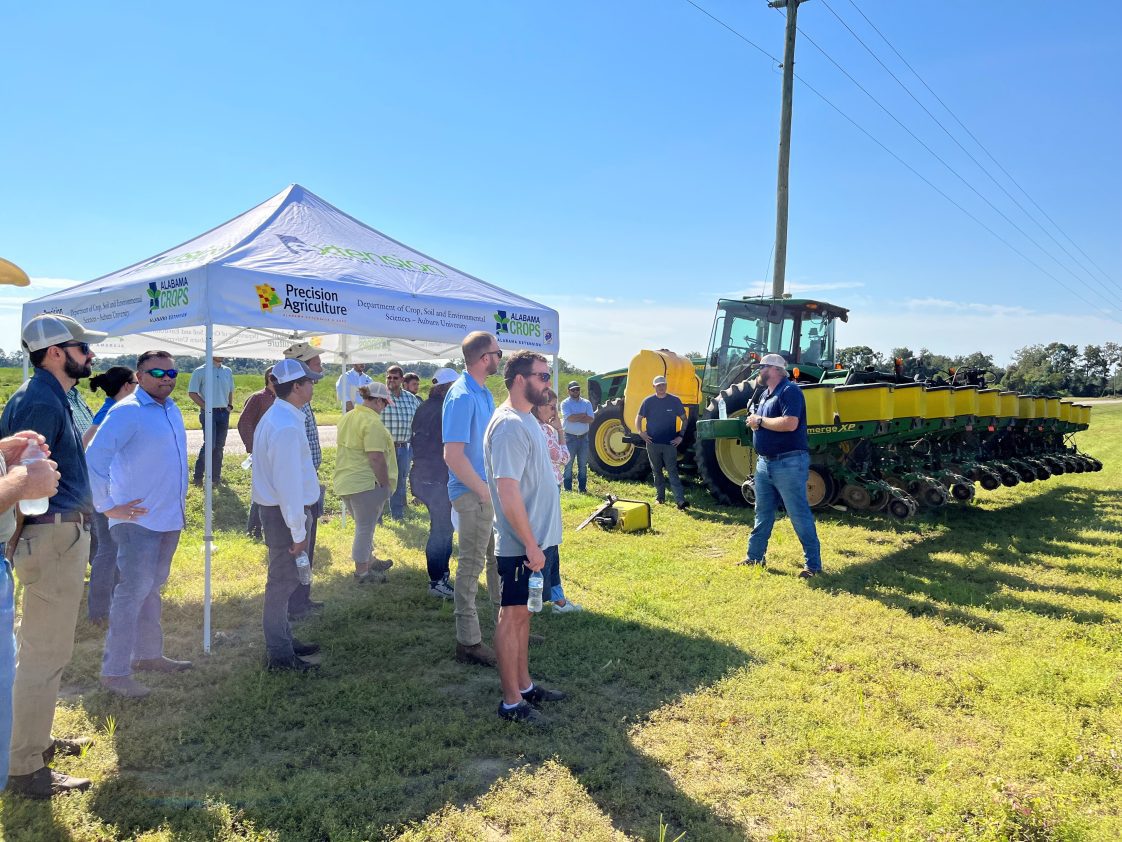
Figure 18. Precision agriculture field day.
The Precision Agriculture Extension program collaborated with farmers and industry to increase knowledge and skills in using precision agriculture technologies. Nine on-farm sites were selected for demonstrations, evaluation, and hands-on training. These sites allowed one-to-one and group training and knowledge exchange among farmers, Extension specialists, industry, and farmers. Six on-farm demonstrations focused on sensor-based irrigation scheduling and variable rate irrigation applied to corn and peanut. One site in Baldwin County concentrated on evaluating and demonstrating multiple technologies and practices: planting technologies to support precise seed placement and variable rate seeding on cotton, site-specific nitrogen management, and drone images to support in-season management. Canopy and soil sensing technologies as well as machine learning algorithms were evaluated and demonstrated for remote prediction of peanut maturity in two sites located in Macon and Barbour Counties. Field days, one-to-one trainings, small group meetings, and publications were used to increase awareness, knowledge, and skills. Two precision irrigation field days were organized for farmers and other stakeholder groups in Lawrence, Limestone, Lee, Macon, and Russell Counties. Participants gained increased awareness and knowledge on best irrigation management practices, using soil sensors for irrigation scheduling, and variable rate irrigation. A third field day in Baldwin County focused on novel technologies on planters, drones, fertilization, and cotton agronomics.
Spray Drone Evaluation in Field Crops
Project Leader: Steve Li
In 2022, Extension specialists used spray drones to evaluate herbicide burndown, corn and peanut fungicide, corn desiccant, and cotton defoliants in 15 separate on-farm trials. Results demonstrated that spray drones can be equally or more effective than airplane and ground sprayers. Spray drones are an excellent fit for Alabama field crops considering the small and odd-shaped fields, frequent wet periods, rolling terrain, frequent travels among small fields, and long growing seasons. More than 800 farmers, company representatives, students, and other agriculture-related personnel have seen the new technology via many field demonstrations conducted by Extension specialist Steve Li since the summer of 2022. As a technical expert with more than 12,000 followers, Li has shared research and educational posts in Facebook spray drone groups. Because of Extension’s educational and technical efforts, three farms have adopted spray drone technology and three commercial spray drone services have been established. Many row crop farmers are highly interested in spray drones, and several are ready to adopt this new technology for the 2023 season.
- Figure 19. Geneva County FFA spray drone class.
- Figure 20. Steve Li, Extension specialist, demonstrates the latest spray drone model to peanut growers at an Alabama-Florida peanut trade show.
 Katelyn Kesheimer, Extension Specialist, Assistant Professor, Entomology and Plant Pathology; Eddie McGriff, Regional Extension Agent, Agronomic Crops; Scott Graham, Extension Specialist, Assistant Professor, Entomology and Plant Pathology; Amanda Strayer-Scherer, Extension Specialist, Assistant Professor, Entomology and Plant Pathology; Kassie Conner, Extension Specialist, Agronomic Crops; Adam Rabinowitz, Extension Specialist, Assistant Professor, Agricultural Economics and Rural Sociology; Andrew Sparks, Associate Director, Agricultural Research and Extension Center; John Vanderford, County Extension Coordinator; Audrey Gamble, Assistant Professor, Crop, Soil, and Environmental Sciences; David Russell, Assistant Extension Professor, Crop, Soil, and Environmental Sciences; Brenda Ortiz, Extension Specialist, Professor, Crop, Soil, and Environmental Sciences; Livia Ianhez Pereira, Graduate Student, Crop, Soil, and Environmental Sciences; Bruno Lena, former Postdoctoral Fellow; Guilherme Morata, Regional Extension Agent, Agronomic Crops; Jessica Kelton, former Regional Extension Agent; Steve Li, Extension Specialist, Associate Professor, Crop, Soil, and Agronomic Crops; Sonja Thomas, Extension Specialist, Agronomic Crops; Jimmy Jones, County Extension Coordinator; Tyler Sandlin, Assistant Extension Professor, Crop, Soil, and Environmental Sciences; Rishi Prasad, Extension Specialist, Assistant Professor, Crop, Soil and Environmental Sciences; Sedrick Mack, Regional Extension Agent, Agronomic Crops; Eros Francisco, Extension Specialist, Assistant Professor, Crop, Soil, and Environmental Sciences; Steve Brown, Extension Specialist, Assistant Professor, Crop, Soil, and Agronomic Crops; and Edward Sikora, Extension Specialist, Professor, Entomology and Plant Pathology, all with Auburn University
Katelyn Kesheimer, Extension Specialist, Assistant Professor, Entomology and Plant Pathology; Eddie McGriff, Regional Extension Agent, Agronomic Crops; Scott Graham, Extension Specialist, Assistant Professor, Entomology and Plant Pathology; Amanda Strayer-Scherer, Extension Specialist, Assistant Professor, Entomology and Plant Pathology; Kassie Conner, Extension Specialist, Agronomic Crops; Adam Rabinowitz, Extension Specialist, Assistant Professor, Agricultural Economics and Rural Sociology; Andrew Sparks, Associate Director, Agricultural Research and Extension Center; John Vanderford, County Extension Coordinator; Audrey Gamble, Assistant Professor, Crop, Soil, and Environmental Sciences; David Russell, Assistant Extension Professor, Crop, Soil, and Environmental Sciences; Brenda Ortiz, Extension Specialist, Professor, Crop, Soil, and Environmental Sciences; Livia Ianhez Pereira, Graduate Student, Crop, Soil, and Environmental Sciences; Bruno Lena, former Postdoctoral Fellow; Guilherme Morata, Regional Extension Agent, Agronomic Crops; Jessica Kelton, former Regional Extension Agent; Steve Li, Extension Specialist, Associate Professor, Crop, Soil, and Agronomic Crops; Sonja Thomas, Extension Specialist, Agronomic Crops; Jimmy Jones, County Extension Coordinator; Tyler Sandlin, Assistant Extension Professor, Crop, Soil, and Environmental Sciences; Rishi Prasad, Extension Specialist, Assistant Professor, Crop, Soil and Environmental Sciences; Sedrick Mack, Regional Extension Agent, Agronomic Crops; Eros Francisco, Extension Specialist, Assistant Professor, Crop, Soil, and Environmental Sciences; Steve Brown, Extension Specialist, Assistant Professor, Crop, Soil, and Agronomic Crops; and Edward Sikora, Extension Specialist, Professor, Entomology and Plant Pathology, all with Auburn University
New July 2023, Agronomic Crops Team Impact Report 2022, ANR-3008





